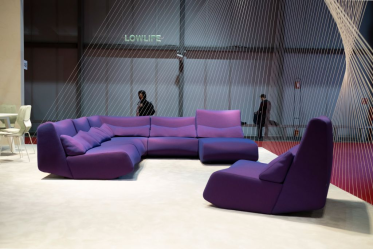
The Eames Plastic Side chair, one of the most replicated pieces of furniture in Australia, was originally designed in the 1950’s. Photograph courtesy Vitra.
We’ve all heard the phrase ‘They don’t make ’em like they used too!’ and – if we consider most furniture purchased these days – that statement holds true. Although when you have to put that bookshelf together yourself, it’s questionable who the maker actually is.
Well-made furniture is expensive, more expensive than a replica or stylistic imitation, but there is value in the cost like any good investment. The right purchase can pay dividends over many years, just like clothing, appliances or even your home. Quality materials and craftsmanship add to the price, but they also increase the lifespan of your possession.
Take, for example, the iconic Eames moulded plastic side chair, originally designed in 1950 and now made with eco-friendly materials. It is true that Charles and Ray Eames were committed to democratising design, but this chair will still set you back AUD$830. That’s a lot, of course, and when you sit it next to a replica, which you can pick up for under AUD$100, the choice may seem simple. But the choice is actually more complex than merely going for the cheapest option.
The original comes with a five-year warranty for starters, yet a search for ‘warranty’ on Australia’s leading replica site produces no results, though the site does point out the maximum weight its ‘version’ can hold is 120 kilograms. Perhaps you shouldn’t consider using it to change a light globe... Alarmingly, the work of the original designer is not the only piece of copyright commonly breached by these companies – they actually use photographs of the originals to sell you a copy.
That is the key point to investing in well-made, original pieces of design – aside from the modest royalties the designer receives when you buy an original (they get none for a replica even if their name is used) – the real deal is made to last and will generally outlive its warranty, perhaps even its owners. The replica on the other hand will prove an embarrassment at the dinner table when your guests get nervy about the stability of their perch.
Think about it for a minute – a chair bought 10 years ago for $500 would have cost you less than 15 cents per day by now and with every day that passes that figure drops. You couldn’t feed your coffee habit on that, let alone the occasional smashed avo on toast.
Buying a similar looking chair for less than half the price may seem appealing at the time, but you can almost be guaranteed you’ll be throwing it out within a couple of years, heading back to the retailer to replace it. Factoring in time and effort – you would only have to do this once to realise the cheaper option wasn’t such a great idea in the first place.

Re-classic’ing a piece of existing furniture is a more sustainable way of keeping stories alive.
Like art, or a vintage car, quality furniture can hold its value. To illustrate this, Danish brand Skagerak once bought back a teak Drachmann Collection outdoor setting from its original owner 20 years after it was purchased at 80 percent of the original price. Its natural finish had aged to a beautiful silver colour, though the construction was clearly gold.
Here in Australia, outdoor timber furniture is subjected to the extremes in weather with sun and rain taking their toll. The right timber, crafted properly, results in something that can be handed down, but more importantly never thrown out.

Skagerak's Drachmann Collection in teak.
And this raises a different question when you are making choices about furnishing your home – as investing in quality furniture will not simply cost you less over time, but mean you are investing in a better planet. As consumers, our purchasing decisions can have a huge effect on the environment, but yet we are compelled to consume. Simply, buying something that won’t end up as landfill is the choice of a conscious consumer and the factories that house these craftspeople are becoming more and more sustainable themselves.
Of course, this is not always an option when it comes to household budgets, but it doesn’t make well-made furniture a luxury item. Like your wardrobe, there are the pieces you will treasure forever and there are the pieces that you may grow out of.
So how do you know what makes a solid investment? Here are a few tips to ensure your next purchase becomes, well, part of the furniture:
• If a manufacturer offers a warranty it means they believe in their product and its quality, thus they expect to last.
• Keep an eye out for pieces used in high traffic areas at your local café or pub; if they can survive the hospitality environment for a few years, then they’ll last you a decade or more.
• Don’t buy online; experience the physical object up close. The aesthetic differences may be minimal, but there are many corners cut in providing comfort and stability, some have even resulted in physical harm due to metal edges being exposed.
• Check that any lighting you are considering meets Australian standards and that timber furniture is FSC certified.
• Have your grandparents’ furniture reupholstered or refurbished, or track down someone who sells refurbished classics. Things were actually made well back then.
For more information on the current legalities concerning replica furniture see our article here.
The Skagerak collection is available in Australia through Interstudio.
The original Eames collection is available in Australia through Living Edge.
WRITTEN BY HouseLab








